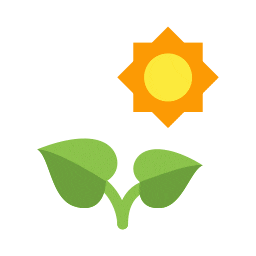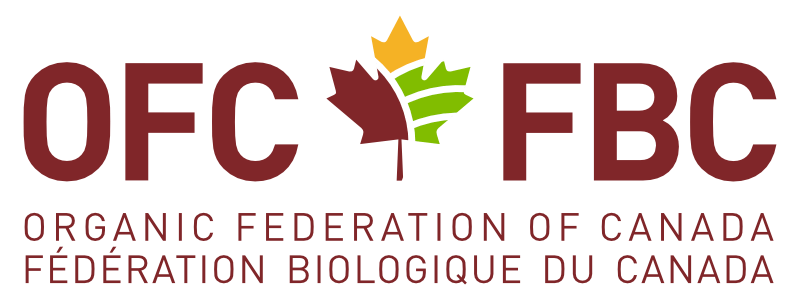Better Baby Greens: Optimizing the production of organic greens in muck soil #
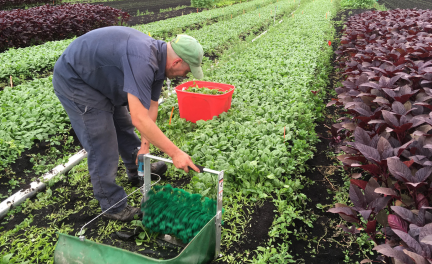
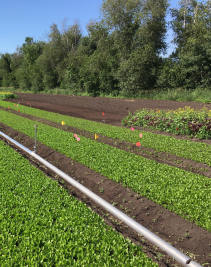
By Emma Geldart
Organic Agriculture Centre of Canada, Dalhousie University
Dr. Caroline Côté of the Research and Development Institute for the Agri-Envi-ronment (IRDA) coordinated a multidisci-plinary team set out to develop an ideal baby greens production system for muck soil. The work was supported by the Organic Science Cluster 3 and Vert Nature, the corporate farm of VegPro International – the largest vegetable producer in Canada.
The primary focus was to manage weeds and insect pests, and optimize yield. Two experiments were established in 2018 and 2019 at IRDA’s Organic Agriculture Innovation Platform in St-Bruno-de-Mon-tarville, Quebec. One of the experiments produced green romaine lettuce and spin-ach, while the second one produced red curled lettuce, red romaine and arugula. Results showed that composted cattle manure produced significantly higher yields for green romaine lettuce. For spinach, pelleted poultry manure produced the highest yields. The different amendments did not impact weed populations.
The irrigation system was monitored by tensiometers in the soil. A tensiometer is a water-filled tube with a manometer or pressure sensor and a ceramic tip that is inserted in the soil. It measures the soil moisture tension, or the strength with which the soil holds water and therefore the strength required by the plant to ex-tract the water. In this case the irrigation system was set to come on at water tension values between -25 and -30 kPa for lettuce. Water losses due to evaporation and water taken up by the crop mainly occurred in the first ten centimeters of the soil.
The different cover crops that were test-ed (forage pea, oat or control) had no effect on lettuce and spinach yields and did not impact weed populations. Diverse trap crops that incorporated several species were better at attracting the redheaded flea beetle than the amaranth-only trap crop. To establish and maintain an effective trap crop, good irrigation and weed management were shown to be important.
Results from the two seasons demonstrated that irrigation played an important role in stimulating weed emergence during the period of stale seedbed. A stale seed-bed encourages weed seeds in the soil to germinate and are then killed before seed-ing the crop. It does not seem necessary to irrigate the stale seedbed more than once based on the results of this study. Plots irrigated once or twice had a similar amount of weeds at harvest. The use of bioinsecticides, either alone or combined with natural predators, failed to reduce harvest damage from insects for red curled lettuce and arugula. The use of natural predators may be of interest in cases where there is no suitable plant protection product.
Learn more about the research activity: https://www.dal.ca/faculty/agriculture/oacc/en-home/organic-science-cluster/OSCIII/horticulture-/activity-12.html
On-farm compost research project draws on diverse ways of knowing #
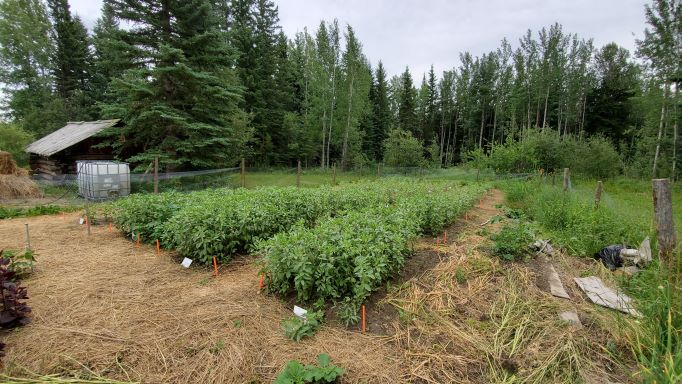
By Margaret Graves
Organic Agriculture Centre of Canada, Dalhousie University
Tiffany Traverse’s Fourth Sister Farm in Northern British Columbia is acting as an alternative research lab for integrated systems. With a focus on seeds, wild harvesting and a diversity of livestock and vegetables, Traverse is entrenched in community and contributes in many ways, including to science!
Along with a team of Agriculture and Agri-Food Canada scientists, led by Bharat Shrestha, Traverse is investigating the impact of 5 different amendments, composted manure from her horses, cattle, pigs, chickens, and vermicompost on heirloom fava beans and oats. Composting is done on the farm.
Most importantly, this project is indigenous-led. Traverse is of Secwépemc and settler roots and has designed her farm system with inspiration from her indigenous mentors. When designing the project, she had autonomy over elements like plot size and planting dates, while Shrestha and team contributed the experimental design that includes randomization and a control treatment. The collaboration is made possible by the Indigenous Agricultural Science Partnerships Program.
This rich farming system and its different, closed-loop nutrient sources will be scientifically described via the soil structure, soil life and crop yields. They will look at the nutrients present in the soil and those taken up by the plants.
An intercultural and rigorously designed experiment to learn from an indigenous farm system that keeps livestock and crops tightly interwoven: this project is a beacon of hope.
Cranberry and blueberry byproducts: Out of the garbage and into the gut #
By Margaret Graves
Organic Agriculture Centre of Canada, Dalhousie
A new feed ingredient is waiting in the wings that ticks all the boxes for an effective organic solution. It’s a byproduct, so its use in feed decreases food waste. It’s multifunctional, in that it encourages good bacteria, kills bad bacteria like Salmonella and E. coli, and, stimulates chicken’s immune systems and metabolism. What is this new innovation? It’s leftover mush (pomace) from juicing cranberries and blueberries.
We recently interviewed Dr. Moussa Diarra, a researcher working with AAFC Pacific Agri-Food Research in Guelph. He made it clear that chicken gut health is a significant hurdle for the sustainability of meat bird production. As a possible solution, Dr. Diarra has been testing organic blueberry and cranberry pomaces as feed additives for organic broiler chickens to boost their immune systems against pathogenic infections.
Dr. Diarra’s research found that getting the pomace out of the garbage, where it had previously been going, and into the gut of chickens improved the birds’ health. It provided similar growth performance as the antibiotic bacitracin in feed and has even more beneficial effects for the birds than just killing microbes: the pomaces promoted a healthy immune response and a healthy gut microbiome. If fruit pomaces became widely used in chicken feed, it could mean higher productivity, profitability, decreased waste, and improved animal and public health benefits.
This work has generated interest among both organic and conventional producers who are excited at the prospect of a safer and effective way of managing pathogenic bacteria. The next steps are to refine the processing and formulation of fruit pomace as a cost-effective feed ingredient. This cutting edge work has also set the stage for research on the use of other fruit by-products, like blackberry and guava, to fight pathogenic bacteria in fresh produce and in other types of livestock.
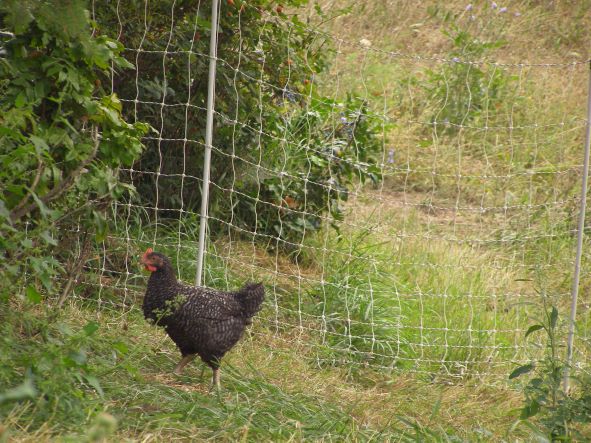
Measuring the Value of Twelve Years of Organic Science Cluster Research #
By Emmanuella Ellis
Organic Agriculture Centre of Canada, Dalhousie
What is the value of agricultural research to society and the environment? Has the research created benefits in the “real” world, beyond academia? Evaluating the impact of scientific research will allow us to start answering these questions. Impact is the translation of research into economic, social, and environmental benefits when the results are put into practice.
Agricultural research aims to ensure food security while protecting the environment and addressing challenges with climate change – these are big goals. Researchers, research facilitators and funders (which for publically funded work, includes the taxpayer) need to know if progress is being made on these goals as a direct result of research.
The Organic Science Cluster (OSC) program has been running since 2009. We want to know if a decade of OSC research has changed the way organic agriculture is practiced in Canada. Using the scientific literature on research impact as a guide, we developed a framework to get these answers. It’s a 6-step evaluation process that links inputs, outputs, outcomes and impacts. It is built around 5 categories of impact: social, economic, environment, policy and human capital (people trained). The framework also sets the stage for more results uptake and benefit from future projects.
The process involves talking with the people who use the new/improved practices, knowledge and tools that are coming out of the research. We are coming to the end of our consultations with researchers who shared interesting insights about their work and its impact at the producer level. Many of them were excited to talk about their old projects and to see how they have continued to bear fruit (or not, and if that was the case, why not).
The next step is to interact with end users of the research outputs. We want to find out if the research is noticed by producers and know from their point of view if it has benefited them. If you have changed the way you farm because of a research project or findings, let us know!
For more information on research impact evaluation frameworks:
Smit, P. J. and Hessels, K. L. (2021). The production of scientific and societal value in research evaluation: a review of societal impact assessment methods. Research Evaluation, pp. 1–13 https://doi.org/10.1093/reseval/rvab002
Morton, S. (2015). Progressing research impact assessment: A “contributions” approach. Research Evaluation 24, pp.405-419 https://doi.org/10.1093/reseval/rvv016
Organic sheep help solve a parasite mystery #
By Margaret Graves
Organic Agriculture Centre of Canada, Dalhousie
All sheep producers have their work cut out for them when it comes to managing gastrointestinal nematode parasites (aka worms). One difference that organic sheep producers face is that they can’t use dewormers routinely. Clause 6.6.11 of the Canadian Organic Standards outlines the exceptional circumstances when dewormers can be used. These restrictions are challenging, but in the case of Haemonchus in Eastern Canada, they helped organic producers avoid drug-resistant parasites. We learned about this in a recent interview with Drs. Paula Menzies and Andrew Peregrine, both veterinarians, professors and researchers at the University of Guelph.
In Ontario a decade ago, there was a significant increase in sheep deaths due to Haemonchus contortus (barber pole worm). One parasite can lay 10,000 eggs per day – and 1000 worms in a lamb’s gut can drain the animal’s blood and kill it in a few weeks. There was also an usually high amount of drug resistance showing up in Haemonchus – dewormers were no longer working against it on some farms.
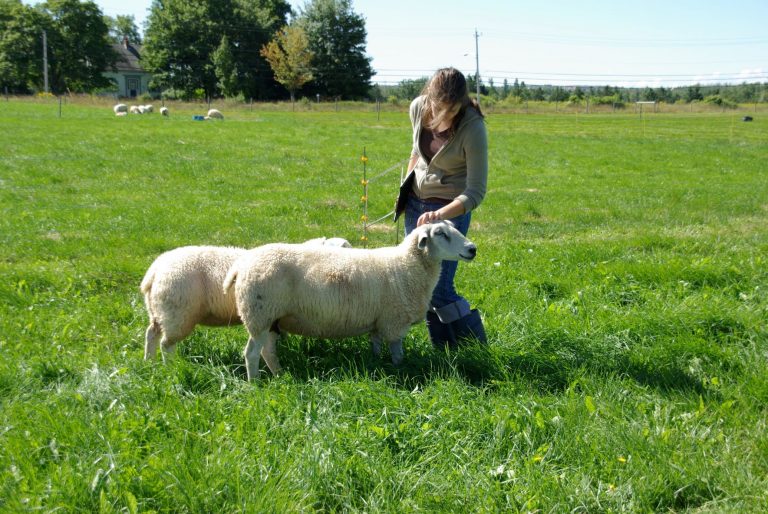
Because the parasite was an issue for all producers, the Organic Science Cluster 1 (2009-2014) funded research into the Haemonchus life cycle. Dr. Menzies (now retired) and Dr. Peregrine found that Haemonchus did not overwinter on Ontario and Quebec pastures, as some worms do. Ewe flocks were being dewormed during the winter; only eggs from the parasites that could survive the winter deworming ended up on spring pastures. These drug-resistant worms reproduced quickly and infected ewes and lambs, leading to high mortality. The practice of winter deworming selected for fast development of drug resistance.
The solution for this problem, which has been promoted widely for years, is the strategic use of dewormers: only deworm the individual sheep that need it, when they need it. Other practices are also needed, such as selecting breeding stock that are better able to develop immunity to parasites, monitoring fecal egg counts, and evasive grazing. Canadian sheep are healthier overall as a result of the research, which benefitted from the observation of different outcomes on organic and conventional farms.
On-Farm Seed Research Punches Above Its Weight #
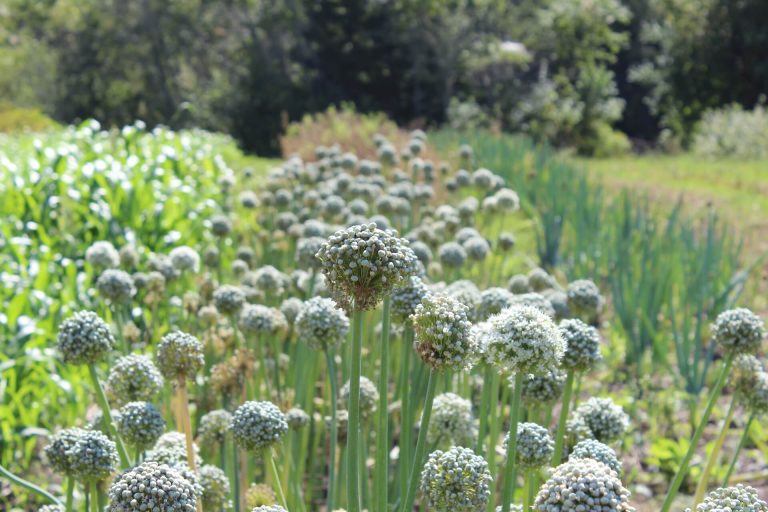
Farmers across Canada benefit from being direct partners in selecting and testing new varieties of vegetables and grains. They report gaining practical skills, community connections and resources, and new market opportunities – a ripple effect that goes beyond new varieties bred for organic.
Shannon Jones and Bryan Dyck run Broadfork Farm, an organic mixed vegetable farm in Nova Scotia. They are one of many farms across Canada that have done vegetable variety trials as part of the Canadian Organic Vegetable Improvement Project (CANOVI). Jones and Dyck trialed different varieties of rutabaga, red carrots and peppers. For the rutabaga, they evaluated the smoothness and uniformity of the roots, and for their own interest, they also compared the flavor.
CANOVI research is supported by the Organic Science Cluster 3 and The Bauta Family Initiative on Canadian Seed Security (a program of SeedChange). Its [older] sister project, a field crops participatory plant breeding program based in Manitoba, has now been running for nine years. Participatory plant breeding allows farmers, plant breeders and other stakeholders to work together to develop new varieties – and the research has shown that the varieties excel.
One of the unique things about these projects is the level of engagement across Canada, facilitated by a strong network of farms, researchers and Bauta Initiative regional coordinators. Since 2013, more than 175 farmers coast to coast have taken part in the participatory plant breeding or variety trials.
A recent survey conducted by The Bauta Initiative shows that 93% of participating farmers learned to implement variety trials on their own farms. At Broadfork Farm, Jones explains that this can be really helpful when they’re direct marketing to customers. Armed with the details from their on-farm data collection, they can explain exactly what’s special about the variety.
“We often do variety trials on our own,” says Jones, “expanding from that, it’s nice to be part of something larger.” She conveys that the trials are an opportunity to try interesting varieties that could otherwise be hard to find.
Across the country, almost 50% of farmers who did the vegetable variety selections and trials started selling vegetable seed commercially, diversifying their businesses as a direct result of the program.
CANOVI is based out of the University of British Columbia, led by Dr. Solveig Hanson under the guidance of Dr. Hannah Wittman. They are breeding carrots, peppers and more. The field crops program breeds oats, wheat and potato, and is based at the University of Manitoba’s Natural Systems Agriculture lab under Dr. Martin Entz’s leadership.
For more info:
Broadfork Farm Blog post “Is it a Turnip or Rutabaga? Growing some special varieties” https://broadforkfarm.com/is-it-a-turnip-or-rutabaga-growing-some-special-varieties/
Vegetables: The Bauta Initiative CANOVI website http://www.seedsecurity.ca/en/programs/creating-seed-diversity/302-canovi,
Field Crops: Natural Systems Agriculture https://www.umanitoba.ca/outreach/naturalagriculture/ppb.html
2021 Photo Contest winner #
The OACC is pleased to announce Yulia Shcherbakova as the winner of the 2021 photo contest!
Thank you to all who submitted photos!
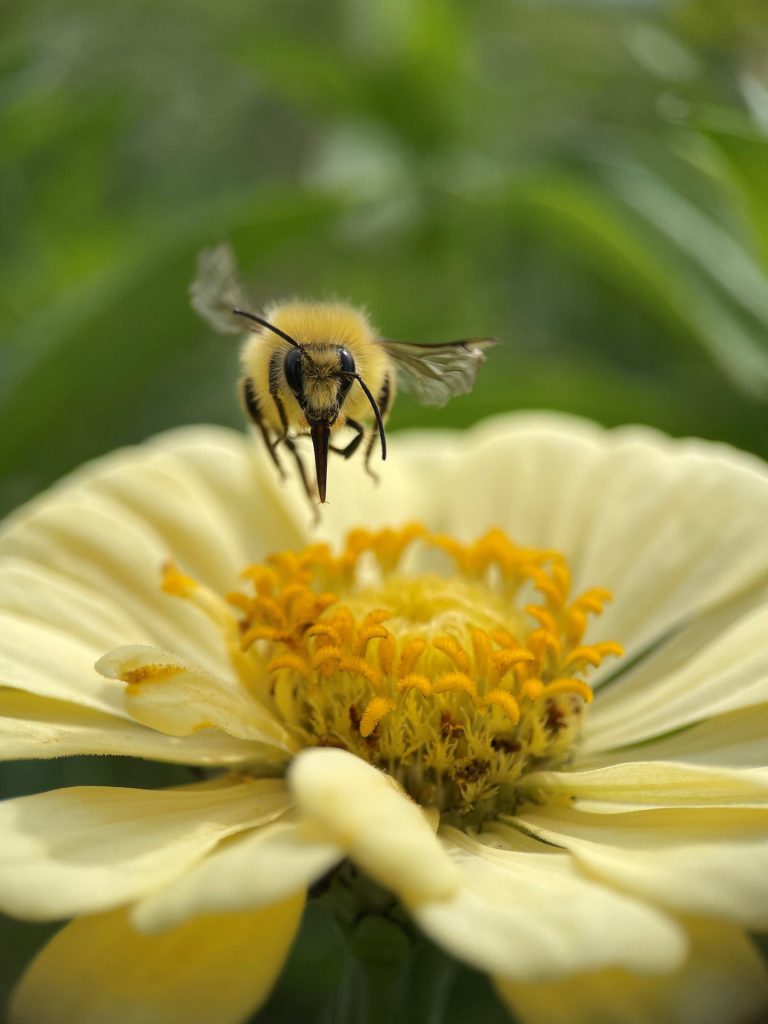
Cluster Management Team #
Meet the team behind the Organic Science Cluster!
Organic Federation of Canada #
Nicole Boudreau
Cluster Manager;
OFC Coordinator
Emma Bryce
Communications Manager
Organic Agriculture Centre of
Canada, Dalhousie University #
Dr. Andrew Hammermeister
OSC Science Director;
Director, OACC
Margaret Graves
Program Manager
Emma Geldart
Communications Officer
Emmanuella Ellis
Research Associate
Rebecca Veenhuis
Program Assistant
The Organic Science Cluster 3 is led by the Organic Federation of Canada in collaboration with the Organic Agriculture Centre of Canada at Dalhousie University, and is supported by the AgriScience Program under Agriculture and Agri-Food Canada’s Canadian Agricultural Partnership (an investment by federal, provincial and territorial governments) and over 70 partners from the agricultural community.
This magazine may be cited as: Geldart, E.. Graves, M.E., Boudreau, N., Wallace, J., and Hammermeister, A.M. (Editors). 2022. Organic Science Canada. Volume 4. Organic Federation of Canada, Montreal, QC and Dalhousie University, Truro, NS. 40 pp. www.dal.ca/oacc/oscIII

